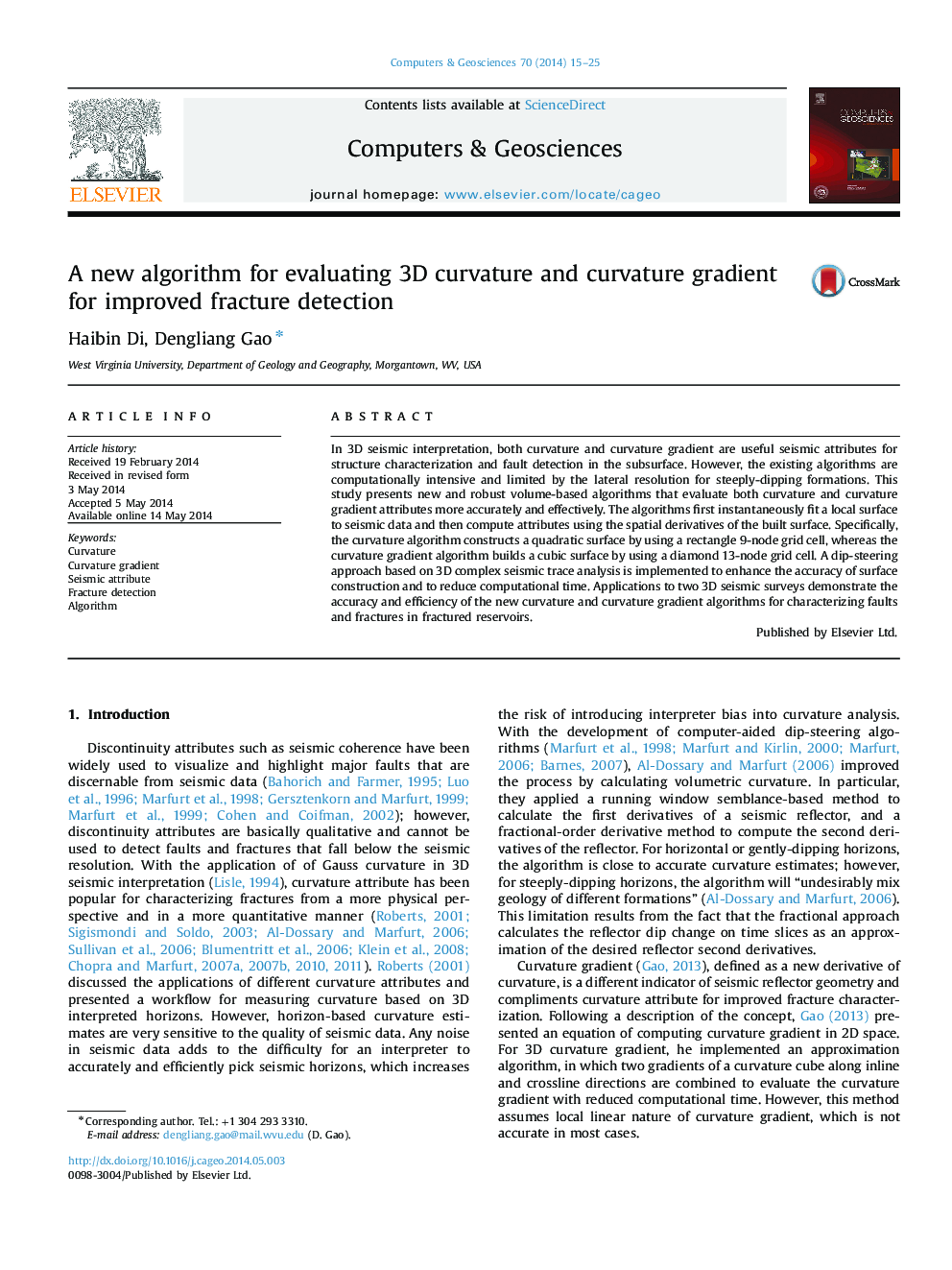| Article ID | Journal | Published Year | Pages | File Type |
|---|---|---|---|---|
| 507204 | Computers & Geosciences | 2014 | 11 Pages |
•Robust algorithms for generating 3D curvature and curvature gradient attribute.•Automatic surface construction improves computational accuracy.•Implementing 3D complex seismic trace analysis for efficient dip estimates.
In 3D seismic interpretation, both curvature and curvature gradient are useful seismic attributes for structure characterization and fault detection in the subsurface. However, the existing algorithms are computationally intensive and limited by the lateral resolution for steeply-dipping formations. This study presents new and robust volume-based algorithms that evaluate both curvature and curvature gradient attributes more accurately and effectively. The algorithms first instantaneously fit a local surface to seismic data and then compute attributes using the spatial derivatives of the built surface. Specifically, the curvature algorithm constructs a quadratic surface by using a rectangle 9-node grid cell, whereas the curvature gradient algorithm builds a cubic surface by using a diamond 13-node grid cell. A dip-steering approach based on 3D complex seismic trace analysis is implemented to enhance the accuracy of surface construction and to reduce computational time. Applications to two 3D seismic surveys demonstrate the accuracy and efficiency of the new curvature and curvature gradient algorithms for characterizing faults and fractures in fractured reservoirs.
